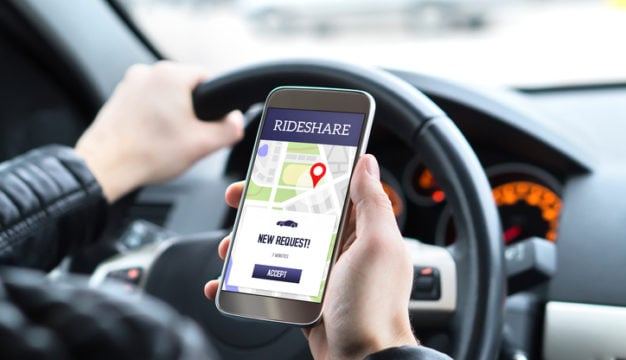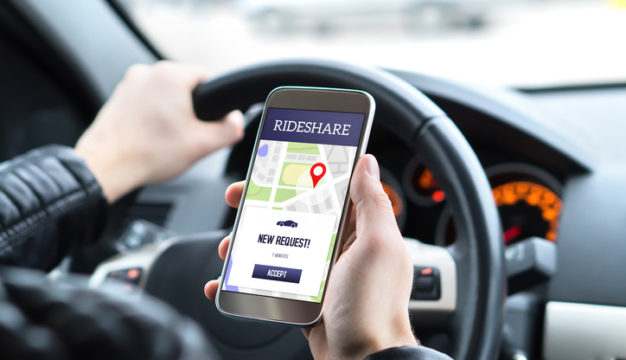There was once a time where we were told by our parents to never get into a strangers car or meet up with people you found on the internet. Well, long gone are those days. Popular ridesharing apps like Uber and Lyft have made it easier than ever to get where you're going by literally getting into a stranger’s car and using the internet to do so. While even just a few years ago the concept would have sent our parents into panic mode, these revolutionary apps have changed the way we get from point A to point B. Thanks in large part to their convenience and less costly prices compared to traditional taxi cabs, ridesharing has become part of the new standard in modern day commuting.
While each ridesharing app has made significant improvements to their safety protocols and guidelines since their launch, personal safety continues to be a point of concern for ridesharing passengers and riders. Uber reported a four percent increase in sexual assaults in 2018 with over 3,000 sexual assaults reported. 9 homicides have been attributed to ridesharing apps, as well as 58 deaths as a result of traffic accidents. While Lyft has yet to release its year-end numbers, they currently have a class-action lawsuit that involves more than 20 incidents of alleged sexual assault.
While these numbers can seem scary, you don’t need to delete your rideshare apps. As with most things in life, taking the right precautions and prioritizing your personal safety can keep you out of harm's way. Here are some of our top tips for protecting yourself as both a rider and as a driver.

Rideshare Safety Tips for Riders
● Avoid waiting outside. If you can, wait inside until your driver has arrived at your location. Standing outside while staring at your phone can tip off criminals or fake drivers. If you must stand outside, do so in a well-lit area around other people.
● Ask the driver “who are you here for?” Drivers are actually required to say who they are picking up. If the driver cannot answer the question, do not get in the car.
● Check the license plate number and vehicle make/model, then share it with a friend or family member. Never get into the car without making sure the vehicle matches the exact description given to you in the app. Drivers are not allowed to use an unregistered vehicle, and you are encouraged to report if the information does not match to the ridesharing app.
● Check the driver rating beforehand. Do not accept a ride from anyone if you feel uncomfortable with their rating.
● Ride in a group whenever possible. Try to avoid riding solo. Opt for UberPool or Lyft Line which allows you to split the cost of your ride with a stranger headed in a similar direction.
● Ride in the backseat after checking the child locks. Always ride in the backseat if possible, but check the child lock before getting into the backseat. If the child lock is on, you will be unable to open the door from the inside.
● Follow along with the ride in your own maps app. Check the route in your own GPS app. If the driver is going way off course, call 911.
● Be wary of loud music, doors locking mid-route or unusual conversations. Always be alert. If an attack were to occur, it usually happens in the middle of the drive.
● Call 911 if the driver becomes confrontational, physical, or makes you uncomfortable. If you ever feel uncomfortable or feel like you’re in danger, call 911. It’s always better to be safe than sorry, and your personal safety is always a priority.
Rideshare Safety Tips for Drivers
Driving in rideshare can be dangerous as well. Intoxicated, rowdy passengers and late-night pickups can create dangerous situations for drivers looking to earn some extra cash. If you’re a rideshare driver, be sure to follow these safety tips:
● Invest in a dashcam to record driver activity. The presence of a dash cam will prevent potential criminal activity and discourage unruly behavior. If something were to occur, the dashcam will protect you from any he-said, she-said accusations.
● Avoid taking detours or changing the final trip destination. Stick to the GPS directions provided by the app and discourage alternative directions provided by riders.
● Pick up and drop off in well-lit, heavily populated areas. Avoid any “back-alley” pickups or drop-offs. Ask passengers to come to a well-lit parking lot, street corner, or front of the building.
● Do not confront riders who cancel trips prior to pick up or during the trip. Simply ask the passenger to leave the vehicle. If they don’t, contact 911 and report the rider to the rideshare service later.
● Request riders to ride in the backseat. The backseat is the safest location for both riders and drivers.
● Get out of the vehicle and call 911 if the rider becomes confrontational, physical, or makes you comfortable. Don’t stay inside the vehicle if the rider creates a dangerous situation. Safely pull over, turn off the engine, and get out of the car.
The best thing you can do when using a rideshare service is to use common sense. Avoid putting yourself into any dangerous situations, and if you begin to feel uncomfortable, don't be afraid to walk away immediately. When you prioritize your safety, you will be able to ride safely and comfortably all year long.
At Signal Security it is our goal to provide you with informative, relevant content. If you like what you see, subscribe to our blog, and be sure to follow us on social media to receive the latest in news and insight into safety and security. Additionally, we would like to hear from you! Feel free to provide your take in the comments section below.



